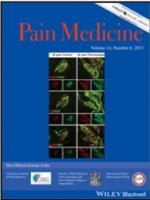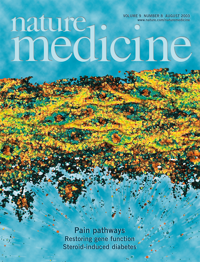
An inheritable genetic dominant disease, NF1 is characterized by numerous benign “tumors” (neurofibromas) that grow within nerves but also as numerous disfiguring cutaneous neurofibromas (cNF) within the skin. NF1 patients also have symptoms of chronic pain and itch in normal skin areas, even before the cNF appear.
Beginning from a private donation, INTiDYN began the first ever investigation of NF1 symptoms of chronic pain and itch. As a result, the unique ITD-CMA platform discovered the previously unknown origin of the cNF and the molecular mechanisms responsible for their growth.
Read the full research article: The evolution and multi-molecular properties of NF1 cutaneous neurofibromas originating from C-fiber sensory endings and terminal Schwann cells at normal sites of sensory terminations in the skin
INTiDYN has now developed a unique patentable molecular therapeutic designed to thwart the growth and eliminate cNFs. Clinical trials will begin in the Spring of 2020.

Afflicting 10% of Americans, these mysterious disorders that share symptoms of chronic pain, fatigue, and “brain fog” are often misdiagnosed and dismissed as psychosomatic (all in your head). INTiDYN research was the first to discover the significant physical pathology involving the nerve supply to arterioles in fibromyalgia patients that provides a rational explanation for the symptoms of fibromyalgia as well as PTSD and ME/CFS.
Read the full article published in Pain Medicine: Excessive Peptidergic Sensory Innervation of Cutaneous Arteriole–Venule Shunts (AVS) in the Palmar Glabrous Skin of Fibromyalgia Patients: Implications for Widespread Deep Tissue Pain and Fatigue
Read our follow-up review, published in Reviews on Environmental Health: Fibromyalgia syndrome pathology and environmental influences on afflictions with medically unexplained symptoms
The ITD-CMA platform discovered the neurochemical characteristics of the pathology leading to a unique patentable strategy of combining three existing medications, approved by the FDA for other diseases, to treat fibromyalgia, PTSD, and ME/CFS. A pilot study to test this strategy is already underway with collaborators at Brigham and Women’s Hospital in Boston.
 INTiDYN researchers pioneered the discovery that the epidermal keratinocytes of the skin have molecular properties that may contribute to chronic pain. Based on ITD-CMA assessments of the chemical properties of keratinocytes from skin afflicted with chronic pain, INTiDYN is currently testing strategies that would use topical combinations of existing therapeutics approved by the FDA for other purposes in order to find combinations that would significantly reduce chronic pain.
INTiDYN researchers pioneered the discovery that the epidermal keratinocytes of the skin have molecular properties that may contribute to chronic pain. Based on ITD-CMA assessments of the chemical properties of keratinocytes from skin afflicted with chronic pain, INTiDYN is currently testing strategies that would use topical combinations of existing therapeutics approved by the FDA for other purposes in order to find combinations that would significantly reduce chronic pain.
Access the studies that led to this discovery:
Keratinocyte Expression of CGRPβ: Implications for Neuropathic and Inflammatory Pain Mechanisms
In view of the current crisis involving addiction to opiates for treating chronic pain, INTiDYN research was the first to detect that cannabinoid receptors are expressed in keratinocytes as a nonaddictive alternative to opiates for treating chronic pain.
This research has extended into a collaboration with one of the foremost cannabinoid researchers, Dr. Andrea Hohmann at Indiana University, to test cannabinoid therapeutics for treating a variety of chronic pain afflictions.
Read the research: CB2 cannabinoid receptor activation produces antinociception by stimulating peripheral release of endogenous opioids
INTiDYN has been at the forefront of major discoveries in fibromyalgia, learn more about their work.
Learn how to support ongoing research